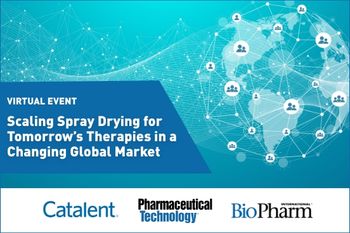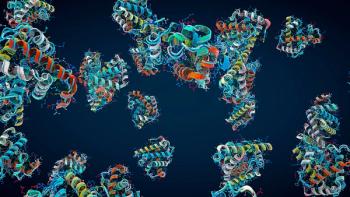
- BioPharm International-01-01-2005
- Volume 18
- Issue 1
Managing the Transition from Research to Development: Implementation of a Manufacturing Strategy
In order to institute a GxP mindset across the organization, support and respect for quality systems should come from the top down.
Building a compliant supply chain and preparing for product launch at an emerging biotechnology or pharmaceutical company can be a challenging task. The infrastructure and systems that larger companies take for granted need to be built from the ground up, usually on a just-in-time basis with limited resources and little room for contingency planning. Frequently, the focus of companies approaching their first commercial product is research-based, with a mission to generate proof-of-concept data, which will propel the product to a profile that justifies increased investment in building development infrastructure. In such an environment some companies find themselves playing catch-up in the areas of chemistry, manufacturing, and control (CMC), and risk serious, costly delays in product approval or launch. Although step-by-step guidelines for success exist and every complex biotechnology product presents its own set of unique challenges, careful planning and management of the transition from an early-stage research company to a later-stage development organization can pay huge dividends downstream during new drug application or biologics license application submission and product approval.
Michael S. Wyand
Therion Biologics is a private, cancer immunotherapy company with two cancer vaccines in late-stage clinical development, one in phase 3 for pancreatic cancer and the other in phase 2 for prostate cancer. With 90 employees and 11 successful years in a Cooperative Research and Development Agreement relationship with the National Cancer Institute (treating over 700 patients with at least 12 prototype pox virus vaccines), Therion quickly changed its focus from research to later-stage development. This transition included developing a supply-chain infrastructure sufficient to meet the demands of product submission, approval, and launch. In managing this transition from research to development, Therion identified three key success factors critical to building a supply-chain infrastructure and executing an aggressive project timeline:
- Establishing a GxP mindset
- Committing to process development
- Identifying an effective strategy to produce cGMP-compliant manufacturing capacity for approval and commercial launch
ESTABLISH A GxP MINDSET
Quality in biopharmaceutical parlance is often narrowly viewed as representing the quality assurance and quality control groups. Many in research see themselves outside of the regulated environment and consider themselves free of the quality regulations that interfere with the creative process and result in excessive paperwork. A limited view of quality in an early-stage biotechnology company should be avoided. The regulated component of quality is just a subset of overall quality in an organization. Data review, principles of documentation, protocols, validated methods and equipment, and change control and deviations all represent good science and management; these are not merely arcane system requirements favored by government regulators.
Why is this broad view of quality important for a successful transition from research to development? Scientists operating outside the traditional regulated environment are usually the source of the initial manufacturing processes as well as the assay technology that will be the foundation for quality control testing, product characterization, and other CMC data necessary for major regulatory submissions. Any gaps in data documentation or lack of appreciation for the regulatory process by these early-stage research groups can result in major CMC problems during later-stage method validation, product characterization, and process validation.
GxP is an acronym referring to any or all of laboratory, manufacturing, and clinical regulations encompassed under Good Laboratory Practices (GLP), current Good Manufacturing Practices (cGMP), and Good Clinical Practices (GCP). In order to institute a GxP mindset across the organization, support and respect for quality systems should come from the top down. Senior quality representation must be fostered at the highest management levels in the company. Quality guidelines and policies should be applied to all areas of the company — not just quality assurance, quality control, and manufacturing. This does not mean that the entire organization will be converted to cGMP- or GLP-compliant status, since an FDA inspection and evaluation will look at those systems with a clear designation as compliant. But it does mean that adherence to protocols and procedures, rigorous documentation, and submission of quality reports will be the standard across the entire organization. Remember, critical decisions regarding which drug to develop are made based on "research" data.
A COMMITMENT TO PROCESS DEVELOPMENT
Early stage manufacturing processes are usually designed at bench scale by research scientists, and are usually of adequate scale to supply material with sufficient quality for preclinical and phase 1 studies. Because commercial scale is not a requirement at the clinical-supply stage, it may seem premature to invest in process development efforts aimed at scale up and process optimization. After all, some might say, you can worry about finalizing the manufacturing process when the product demonstrates success in the clinic, right? Wrong! The final manufacturing process should be locked down before initiating pivotal phase 3 studies.
The process you intend to commercialize needs to be the process you test in pivotal studies. To do that, begin with the expected start date of pivotal studies. Working backwards, generate a timeline to determine when assay and process development must begin. Depending on the duration of phase 2 studies, you may find that serious process development efforts need to begin much earlier even during phase 1 studies.
To establish process parameters, assays measuring process performance must be developed. Assays for potency, product characterization, and impurity levels in complex biotechnology products often break new ground and require discussion with FDA to determine a product-specific approach. Any assays used for early process development must be qualified, if not validated, so that data can be relied on to make critical process decisions. Failure to develop appropriate assays in support of product characterization and CMC submissions has been a major source of clinical delays for many companies.
Justifying investment in process development personnel and laboratories at a time when clinical supply seems adequate to achieve short- and medium-term objectives can be challenging. Although difficult, it is absolutely necessary to identify the regulatory and schedule risks for investors and management. Otherwise there will be inadequate investment in process development-related activities, which will hurt later.
IDENTIFY EFFECTIVE cGMP MANUFACTURING STRATEGY
Capital investment in a purpose-built manufacturing facility prior to confirmatory phase 3 data is often a difficult sell to an organization with limited resources and seemingly unlimited needs. Many companies have overbuilt facilities and have been stuck with expensive excess capacity after a failure in phase 3 or a major program delay. Conversely, inadequate manufacturing capacity can significantly delay product launch and market penetration, resulting in marked loss of revenue for a successful product. A good first step is to conduct a make-versus-buy analysis comparing the option of contract manufacturing to the build-your-own option.
Depending on the type of biotechnology product, contract manufacturing may be a real opportunity, avoiding large capital investment and the staff and infrastructure costs necessary to operate a facility. Problems with the contract option, however, can include considerable resources (people, time, and money) for technology transfer and validation, difficulties in scheduling small size batch runs, and lack of flexibility in conducting process development activities.
Building your own manufacturing capability may be an effective option. A strategy Therion has employed is to stage the capital investment in manufacturing facilities by building a launch facility to handle both late-stage clinical supply and the first few years of commercial production. This type of facility, although smaller in capacity than a full-scale production facility, still needs to be fully cGMP compliant and capable of successfully completing a Pre-approval Inspection. Such a facility, commissioned prior to pivotal phase 3 data, allows investment in a full-scale manufacturing plant to be delayed until receipt of phase 3 data. Assuming that building a new plant (including design, site location, construction, validation, and commissioning) takes three to fours years and that it takes more than 12 months from phase 3 data to approval, then the launch facility must satisfy at least the first two to three years of commercial demand. A typical timeline is Figure 1. Your ability to right-size your launch facility depends on how well you understand the market penetration and commercial demand for your product.
Figure 1. An Idealized Timeline for Initiation of a Commercial Facility
PLAN FOR SUCCESS
Attention to the key success factors and transitioning from research to development requires a belief that a functioning supply chain will be a reality for your company and your product. Part of the transition — changing to a quality GxP mindset — is not capital intensive but demands that management focus hard on this. Early investments in process development and manufacturing capacity may be staged to match development risk and still provide sufficient capacity for product launch using either a contract manufacturing or build-it-yourself strategy. Whatever strategic path you follow, a smooth transition from research to development completed well in advance of major regulatory milestones will position an emerging biotechnology company for successful later-stage product development.
Michael S. Wyand, D.V.M, Ph.D, is Senior Vice President, Research and Development of Therion Biologics, 76 Rogers Street, Cambridge, MA 02142, 617.876.7779, fax 617.349.3794.
Articles in this issue
almost 21 years ago
Pleated Membrane Filters Improve Process Economicsalmost 21 years ago
Editorial—Take a Hike, Chicken Littlealmost 21 years ago
Final Word: Suppliers Can Help Companies Achieve Speed to Marketalmost 21 years ago
Affinity Chormatography Removes Endotoxinsalmost 21 years ago
Conceptualizing, Making, and Selling the Brandalmost 21 years ago
US Regulation of Plant-made Biopharmaceuticals, Part 1almost 21 years ago
Regulatory Beat: Policy Makers will Focus on Drug Safety and Costs in 2005almost 21 years ago
StreetTalk: Trends to Watch in 2005Newsletter
Stay at the forefront of biopharmaceutical innovation—subscribe to BioPharm International for expert insights on drug development, manufacturing, compliance, and more.





